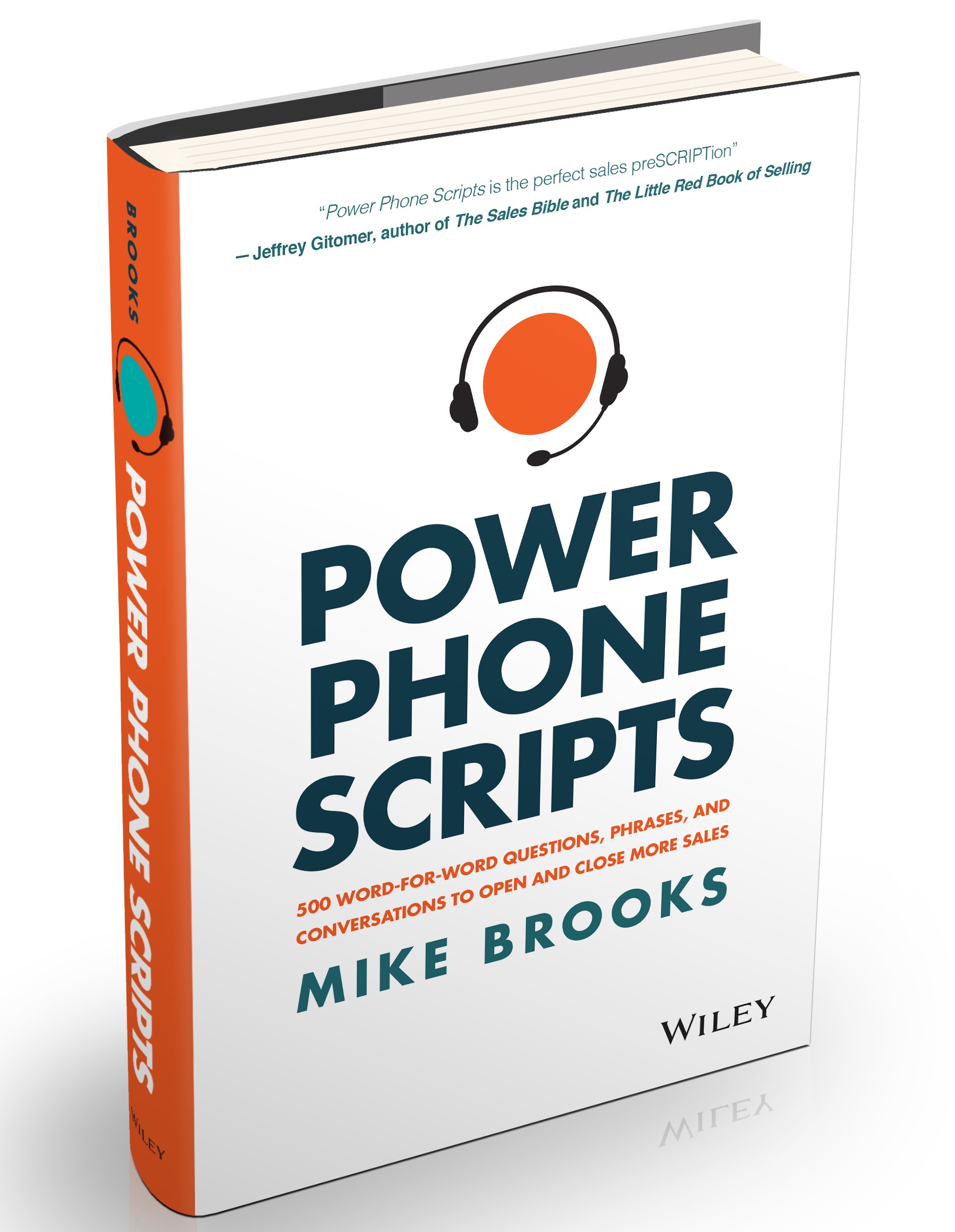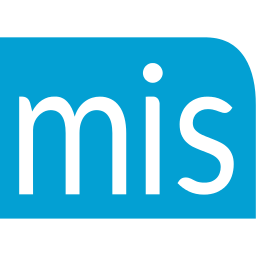 Staring at a list of cold names you have to call can be discouraging. Calling those names and leaving voice mails that never get returned is also discouraging. And finally reaching someone only to be quickly blown off can be downright heart breaking! Don’t you wish there was a way to turn cold names into warm leads?
Staring at a list of cold names you have to call can be discouraging. Calling those names and leaving voice mails that never get returned is also discouraging. And finally reaching someone only to be quickly blown off can be downright heart breaking! Don’t you wish there was a way to turn cold names into warm leads?
There is!
It’s called a “touch point plan,” and it’s very effective if done right. A touch point plan is simply a combination of carefully scripted voice messages and emails used in combination over a period of time. How many messages and over what period of time is variable, and I’ve seen some studies recommend as many as six phone calls and five emails over a month’s time.
I’ve been successfully using a bit less – five to seven total messages – but I supplement this strategy by making calls in between trying to “catch” the prospect picking up their phone. If they don’t answer, I don’t leave a voice mail.
What type of a touch point plan you decide to develop (how many calls and emails) can depend on many factors such as whether it’s a business to business call – and what your target prospect’s title is – or whether it’s a business to consumer call and what hours you’re calling. You’ll find what your sweet spot is if you just experiment a bit.
The bottom line, though, is that the more times you reach out to a prospect, the more likely it is they will become familiar with you and your company. Many prospects will respect your professional and persistent attempts to reach them. Because of this, when you finally do reach a prospect you’ll have built some recognition and credibility, and your prospect will be more motivated to give you a bit of their time.
This is how you turn a cold lead into a warm lead.
Below I’ve listed a sample touch point plan that involves two voice messages and three emails. I first make about a week of calls without leaving a voice mail (assuming I don’t reach the prospect), and then I spread the following touch point plan out over two weeks.
If I haven’t gotten a response or reached anyone after the touch point plan, I then spend the fourth week calling again without leaving a message. I’ve had A LOT of success with this plan and at the end of the four week process, I’ve generally reached those prospects who are reachable.
Here is a sample touch point plan, with generic wording, that you can customize to fit your company and product or service:
Voice Mail #1:
Hi _________, this is (Your Full Name) with (Your Company).
_________, I’m calling about (Your brief value prop – example: “the effectiveness of your online marketing”).
I wanted to briefly introduce you to a way to save as much as 25% over what you may be spending now, and still maintain or even increase the effectiveness of your results.
If you would give me a quick call back at: (Your Number) we can set a time to speak.
Once again the name is (Your Full Name), with (Your Company Name) and the number is (Your Number Slowly).
I’ll follow this up with an email and another call to you if I don’t hear back. Have a good day.
Email #1 (To be sent right after you leave your first voice mail):
Subject Line: (First Name), I just left you a vm
Body of email:
{first name},
This is (Your Full Name) with (Your Company), sorry I missed you.
I understand that you’re in charge of your online marketing and I wanted to set up a time to briefly speak with you later this week. (If you are not in charge of the advertising, please forward this to the person who is).
We have a new way of maximizing your online advertising spend that reduces what your current budget, yet it also reaches more of the customers that fit your ideal demographic. (Obviously, insert your value prop here). Our model is so effective that you can literally save up to 25% over what you’re spending now!
I’d like to schedule a brief conversation to explain how this would work with your company, and I guarantee you’ll at least come away with a whole new way of looking at your online marketing.
If you would reach back out to me with a couple of days/times that might work that would be great.
If I don’t hear back, I’ll reach out to you again next week.
Looking forward to connecting with you.
(Your Name and Company Signature)
Voice Mail #2: (Three to four days later)
Hi _________, this is (Your Full Name) once again with (Your Company). My number is (Leave your number slowly).
_________ you probably received a voice mail from me already, and I also sent you an email along with a brief description of how we save companies up to 25% on their online advertising, while in many cases increasing their results. (Your value prop goes here)
I’d like to spend a few minutes on the phone with you next week, and I guarantee that it will be worth your time.
If you would give me a quick call back to let me know a day and time that would work for you that would be appreciated. My direct phone number again is: (Your Phone Number).
I’ll follow up again with you if I don’t hear back. Have a great day.
Email #2: (Send this email one to two days after your second voice mail)
Attachment: (Include an online brochure of your company and services)
Subject Line: (First Name), second attempt to reach you
{first name},
This is (Your Full Name) with (Your Company Name) once again.
I hope you’ve received my messages, and today I wanted to include some information on our company and a brief description of what we do.
As I mentioned earlier, we help companies reduce their spend on their online advertising by as much as 25% while maintaining or even increasing their results. (Your value prop here).
I’m sure that when you compare what we do to what you’re doing now, you’ll want to know more.
I’d simply like a few minutes to see if what we do would be a good fit for you. Once we speak, I guarantee you’ll come away with some good ideas, regardless of what you’re doing now…
I’ll give you a call in a few days after you’ve digested the attached information.
Or, you can reach back out to me to let me know your interest level.
(Your Name and Company Signature)
Voice Mail #3: (Final V/M – send three to four days after 2nd email)
Hi _________, this is (Your Full Name) with (Your Company) again.
I’m sorry we haven’t been able to connect yet. As you may know, we offer a unique way of increasing the effectiveness of your online marketing, while reducing what you’re currently spending by as much as 25%. (Your value prop here)
You may be involved in another initiative right now, so I don’t want to bother you if you’re busy or if you’re not interested.
When you get this message, could you either call back and leave me a voice mail or just respond to one of the emails I’ve sent you?
Just let me know what the next appropriate step would be for us to connect.
You can reach me by calling (Your Number Slowly), or you can email me at: (Your Email Address)
I really appreciate you taking the time to get back with me.
Thanks and have a great day…
Once you’ve customized and tested the voice mails and emails in this touch point plan, you’ll know whether you need to add another one or two messages. Just test a variation of plans and see what the best results are for you. And don’t forget to add in calls the week before and after the plan as well!
The most important part of a successful touch point plan is to consistently use one. Most sales reps fail to reach back out to prospects (both inbound and outbound leads), and many just make one attempt and then move on. The way to double or even triple your sales and income is to be detail oriented and to persevere until you reach your prospects.
Adopting the approach above will separate you from 90% of the other sales reps in your industry and catapult your effectiveness.


 Last week I was speaking with a new prospect who had called in to inquire about one of my inside sales training programs. I went over her needs, matched up my training to fit those needs, gave her pricing options and then began closing on possible dates for the training.
Last week I was speaking with a new prospect who had called in to inquire about one of my inside sales training programs. I went over her needs, matched up my training to fit those needs, gave her pricing options and then began closing on possible dates for the training. You hear it all the time — if your price is higher than your competition you’re told to “build value.” You’re instructed to stress the quality, the warranty, the features, etc. But your prospects have heard all that before, haven’t they? Want a better way?
You hear it all the time — if your price is higher than your competition you’re told to “build value.” You’re instructed to stress the quality, the warranty, the features, etc. But your prospects have heard all that before, haven’t they? Want a better way? Great news everyone: Wiley, a publishing house out of New York City, has picked up the domestic and international rights to my new book: Power Phone Scripts: 500 Word-for-Word Questions, Phrases, and Conversations to Open and Close More Sales!!
Great news everyone: Wiley, a publishing house out of New York City, has picked up the domestic and international rights to my new book: Power Phone Scripts: 500 Word-for-Word Questions, Phrases, and Conversations to Open and Close More Sales!! Don’t you hate it when you get back to your prospect, you’re ready to give a great pitch, you need the sale, and…and….they tell you they looked it over and they’re not interested!
Don’t you hate it when you get back to your prospect, you’re ready to give a great pitch, you need the sale, and…and….they tell you they looked it over and they’re not interested!
 I read a great quote from Picasso (yes, the famous painter) the other day, and it really resonated with my sales philosophy. Here it is:
I read a great quote from Picasso (yes, the famous painter) the other day, and it really resonated with my sales philosophy. Here it is: Back in the office after two weeks on the road training in CA (shout out to my clients there!), and during both weeks – in L.A. and Oakland – it rained! My wife tells me I can no longer say it doesn’t rain in CA. It does, and I was there!
Back in the office after two weeks on the road training in CA (shout out to my clients there!), and during both weeks – in L.A. and Oakland – it rained! My wife tells me I can no longer say it doesn’t rain in CA. It does, and I was there! If you are a subscriber to my weekly ezine, then you know I publish a new article every week. That’s fifty-two new tips, scripts, strategies, and current techniques to help you succeed selling over the phone.
If you are a subscriber to my weekly ezine, then you know I publish a new article every week. That’s fifty-two new tips, scripts, strategies, and current techniques to help you succeed selling over the phone. Staring at a list of cold names you have to call can be discouraging. Calling those names and leaving voice mails that never get returned is also discouraging. And finally reaching someone only to be quickly blown off can be downright heart breaking! Don’t you wish there was a way to turn cold names into warm leads?
Staring at a list of cold names you have to call can be discouraging. Calling those names and leaving voice mails that never get returned is also discouraging. And finally reaching someone only to be quickly blown off can be downright heart breaking! Don’t you wish there was a way to turn cold names into warm leads? Not all sales close on the first – or even second or third, etc. – closing call. Because of that, it’s often necessary to set a call back to continue the conversation. Like most parts of a sale, the call back is one of those recurring situations that you, or your sales team, will find yourself in countless times a day or week.
Not all sales close on the first – or even second or third, etc. – closing call. Because of that, it’s often necessary to set a call back to continue the conversation. Like most parts of a sale, the call back is one of those recurring situations that you, or your sales team, will find yourself in countless times a day or week.